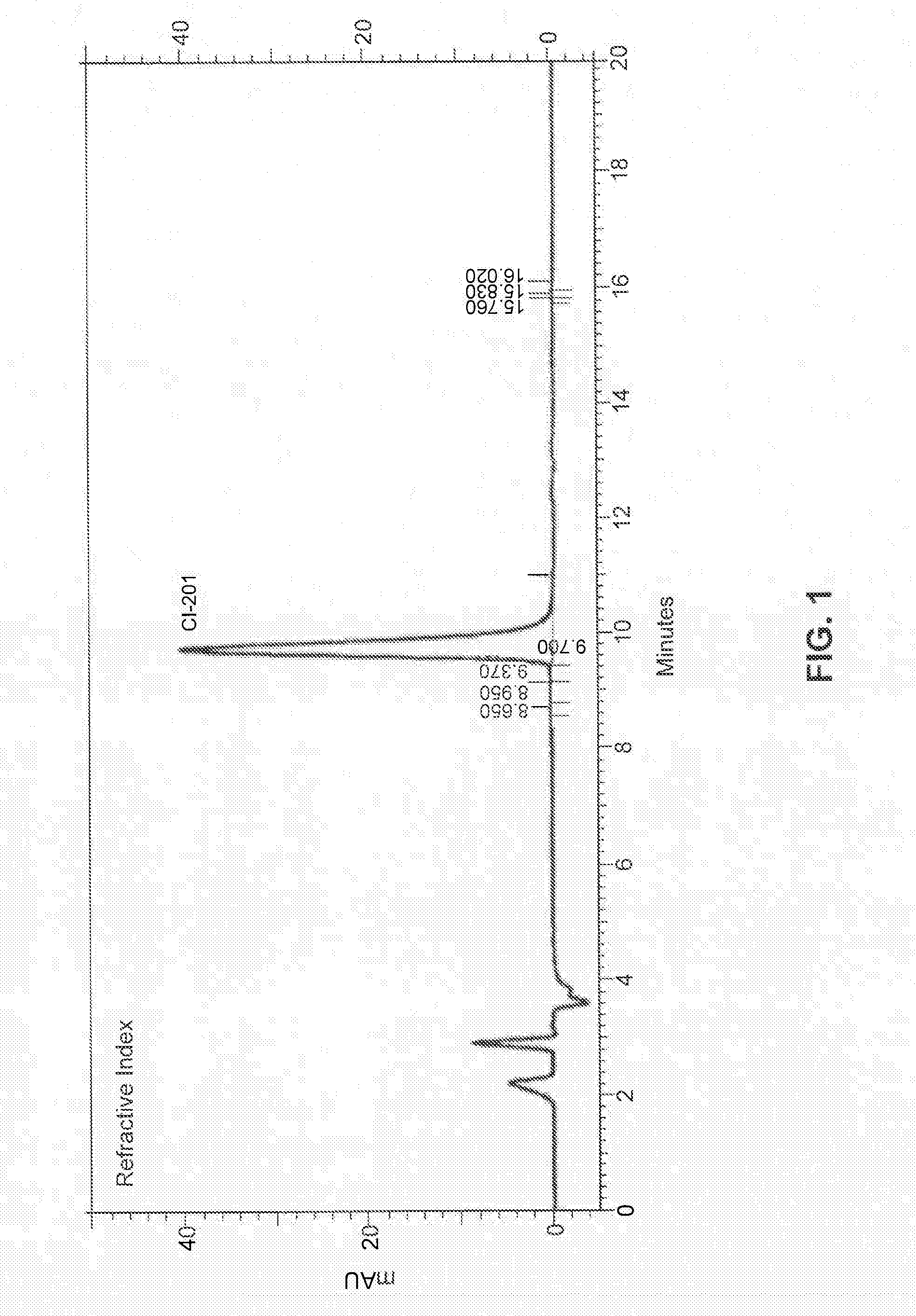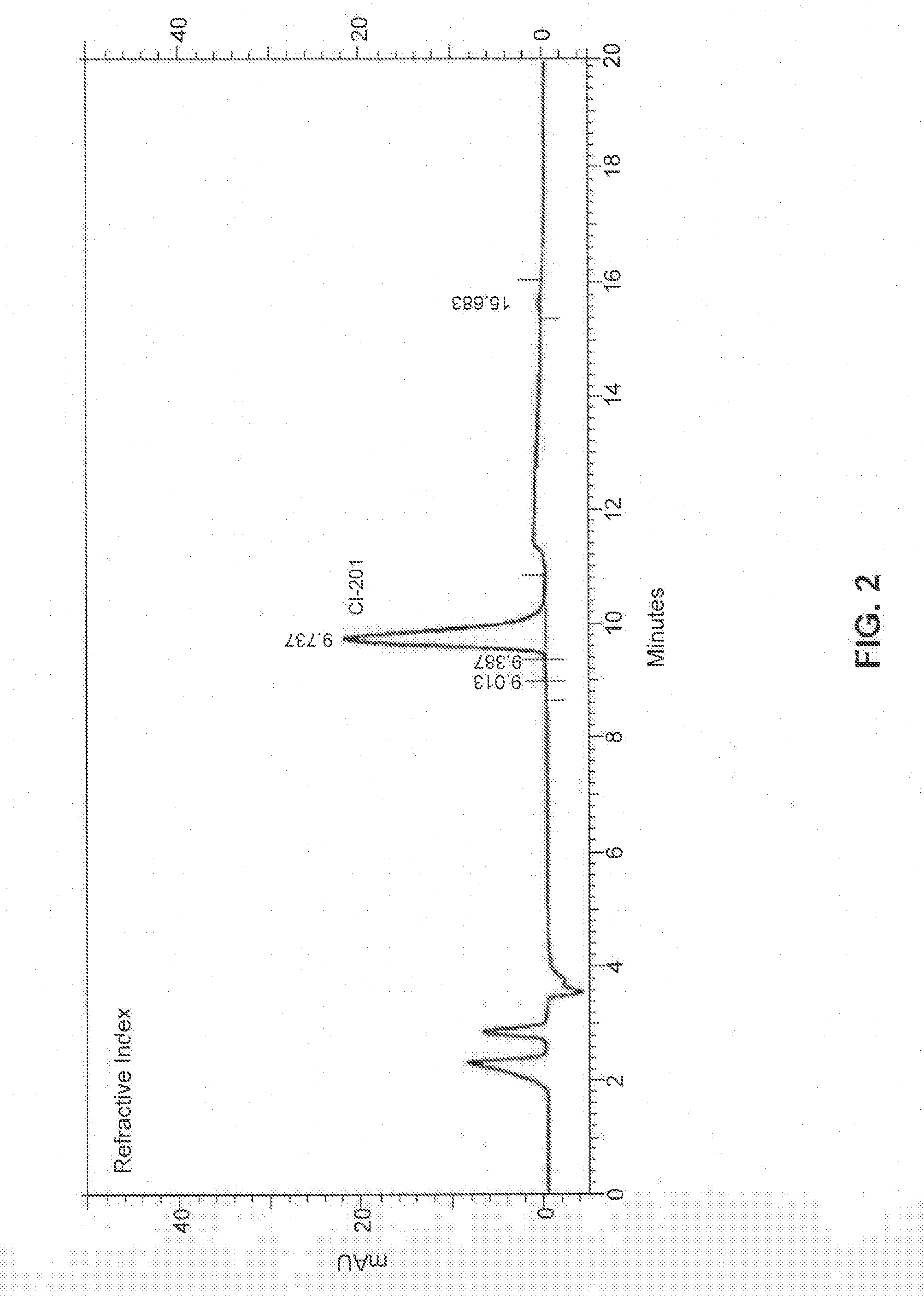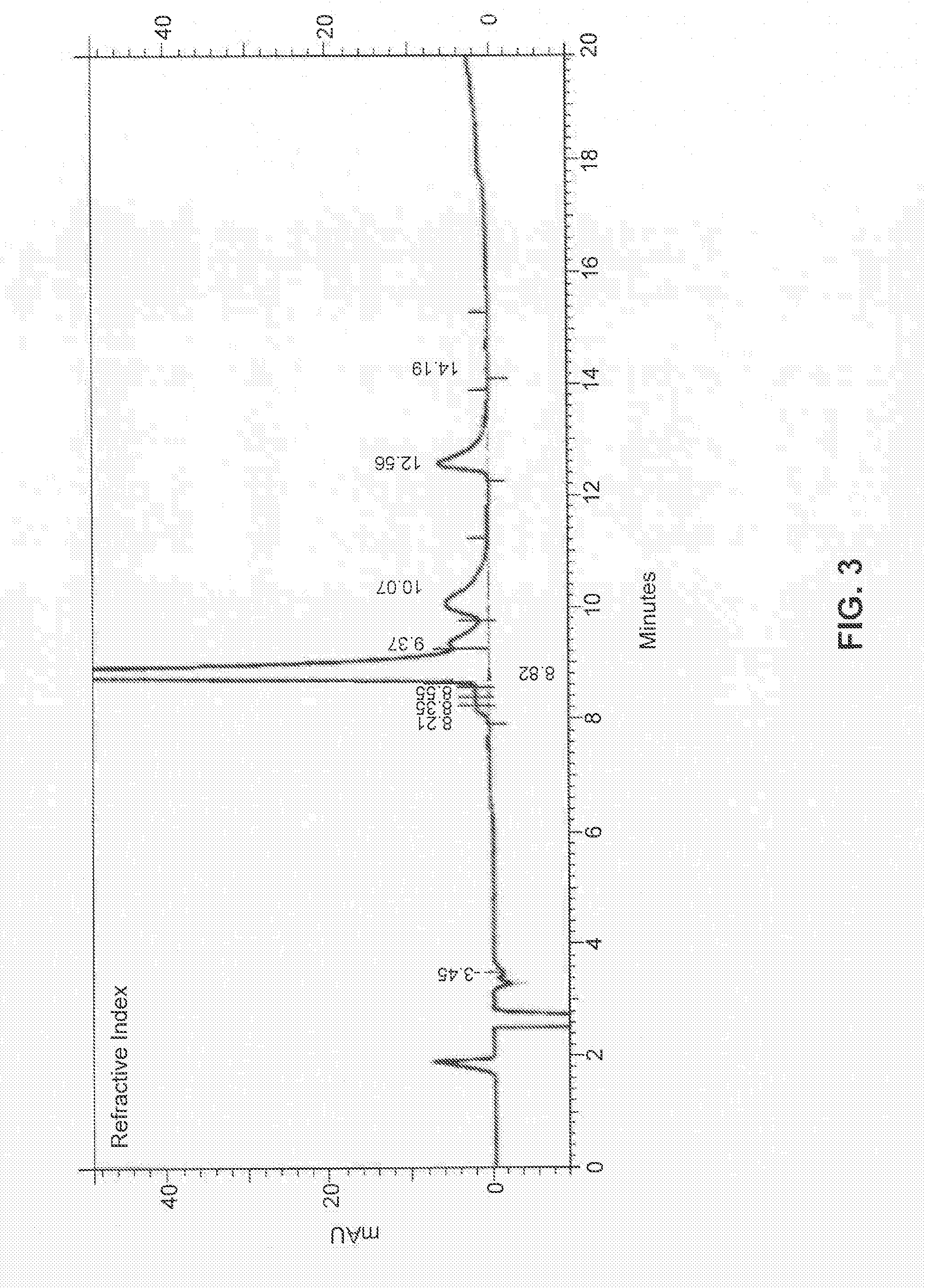High-Purity Phospholipids
a phospholipid, high-purity technology, applied in the direction of biocide, plant growth regulator, animal husbandry, etc., can solve the problems of low overall yield of multi-step synthetic pathway, low specificity of reactions, and low yield of overall yield
- Summary
- Abstract
- Description
- Claims
- Application Information
AI Technical Summary
Benefits of technology
Problems solved by technology
Method used
Image
Examples
embodiment 1
[0153]In some embodiments, the present disclosure provides CI-201 having a purity of greater than about 90% (AUC), or greater than 90% (AUC), e.g., as measured using the RI HPLC method described in Example 10.
embodiment 2
[0154]In other embodiments, the CI-201 of the present disclosure has a purity of at least about 91% (AUC), at least about 92% (AUC), at least about 93% (AUC), or at least about 94% (AUC), e.g., as measured using the RI HPLC method described in Example 10.
embodiment 3
[0155]In other embodiments, the CI-201 of the present disclosure has a purity of at least about 95%, or at least about 96% (AUC), e.g., as measured using the RI HPLC method described in Example 10.
PUM
 Login to View More
Login to View More Abstract
Description
Claims
Application Information
 Login to View More
Login to View More - R&D
- Intellectual Property
- Life Sciences
- Materials
- Tech Scout
- Unparalleled Data Quality
- Higher Quality Content
- 60% Fewer Hallucinations
Browse by: Latest US Patents, China's latest patents, Technical Efficacy Thesaurus, Application Domain, Technology Topic, Popular Technical Reports.
© 2025 PatSnap. All rights reserved.Legal|Privacy policy|Modern Slavery Act Transparency Statement|Sitemap|About US| Contact US: help@patsnap.com



